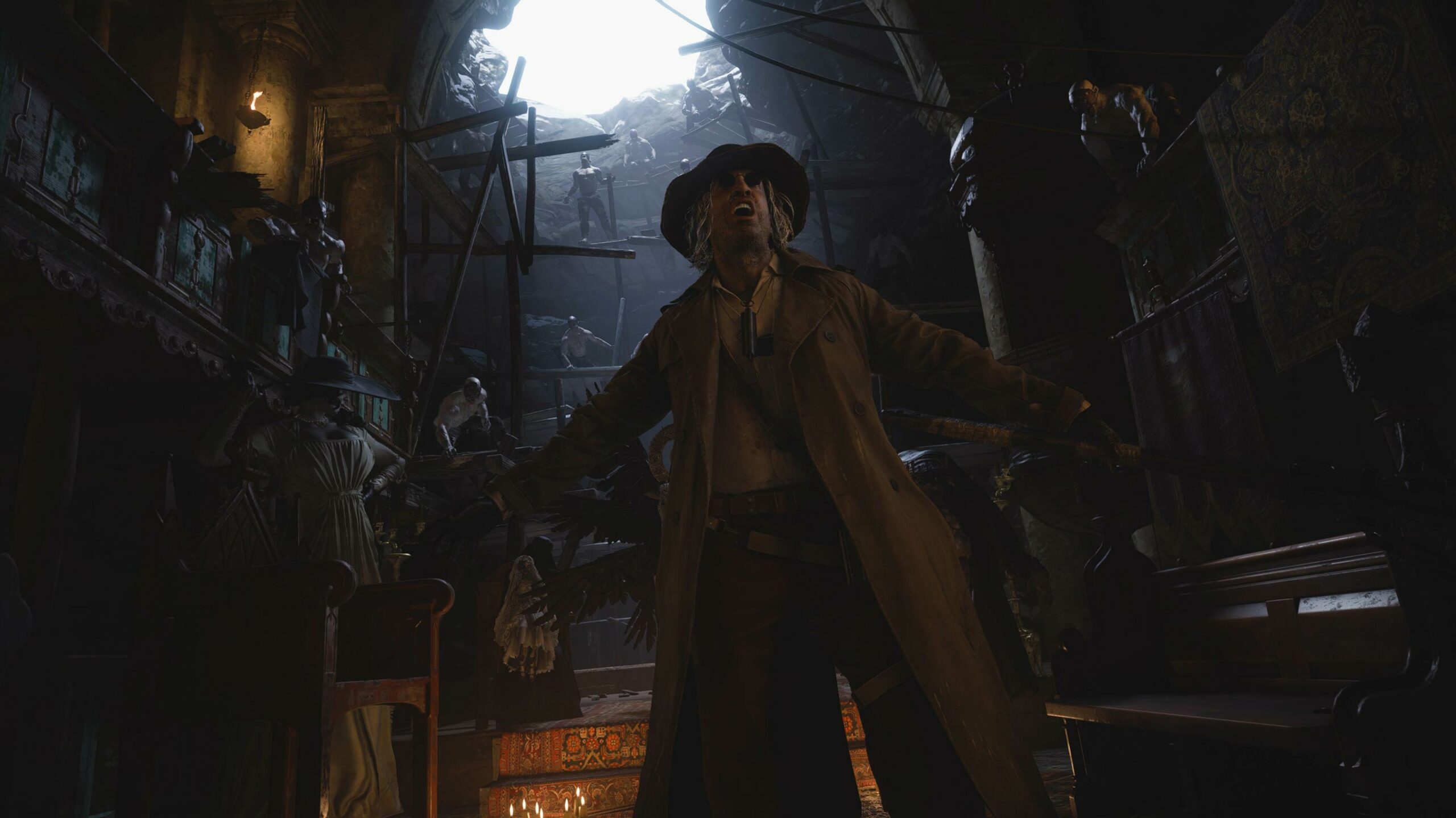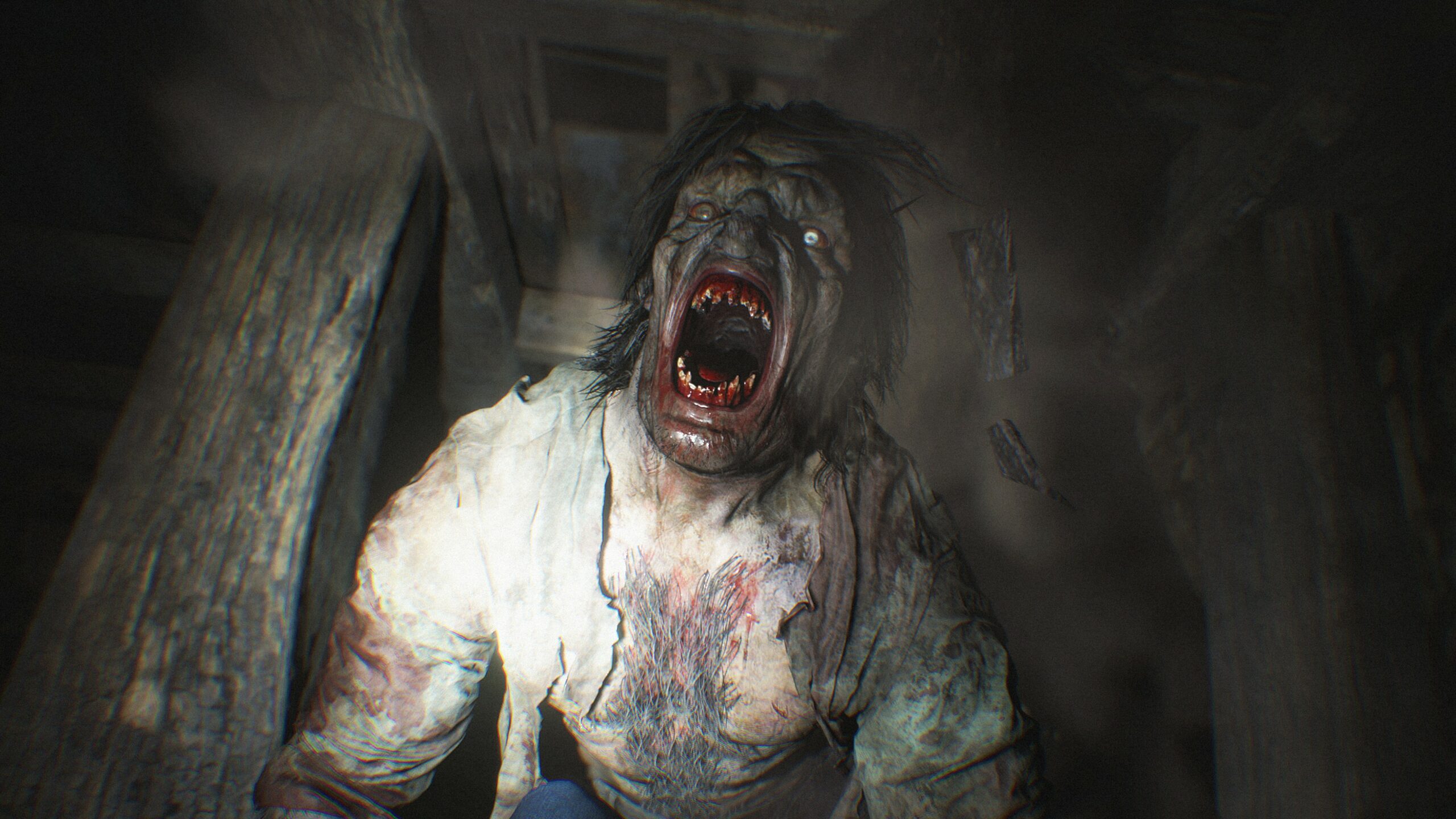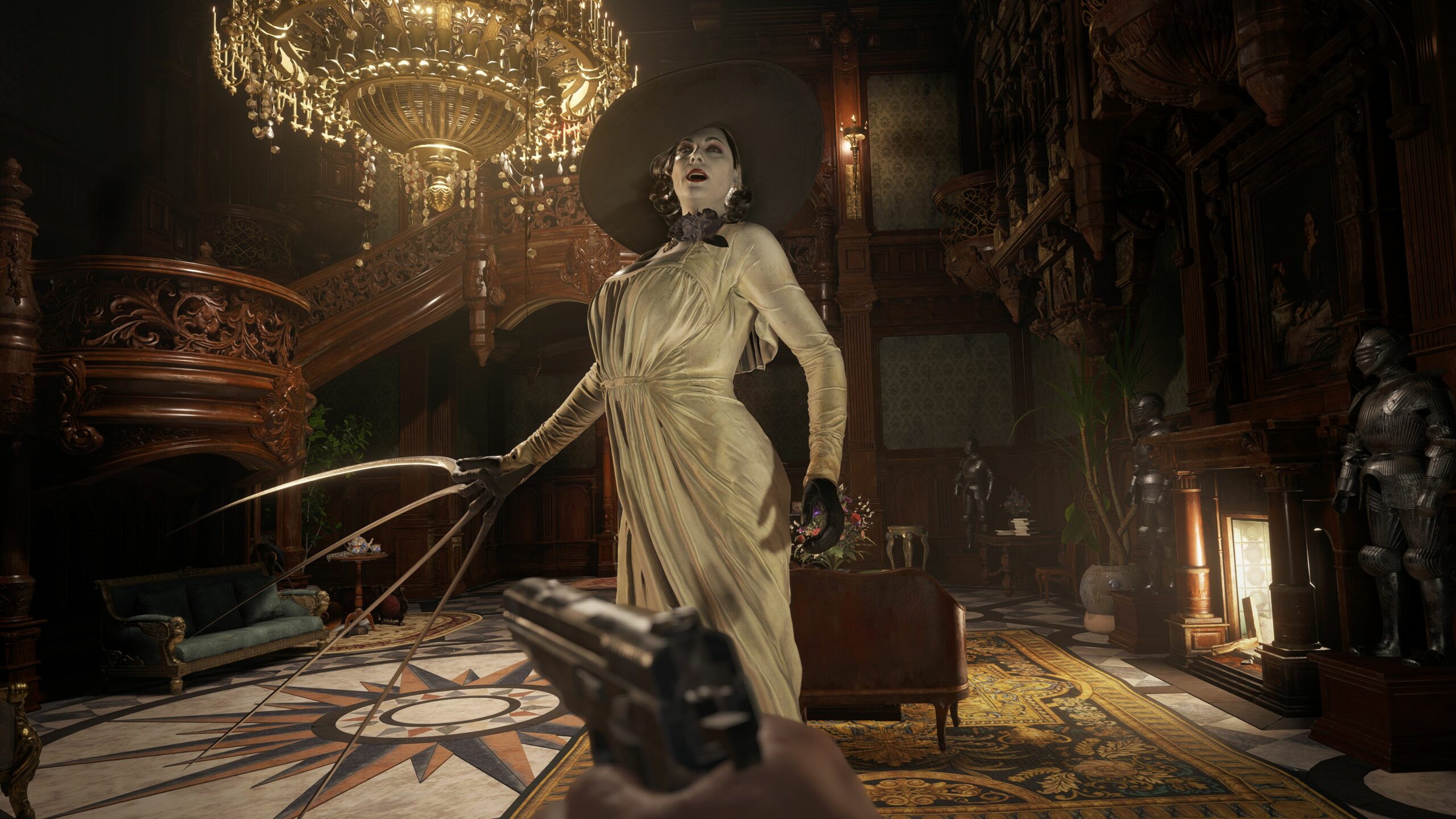
The Resident Evil series is in a fascinating place right now.
On the one hand, Resident Evil 7: Biohazard made the bold move towards the first-person perspective, greatly shaking up the classic survival horror franchise. But at the same time, the remakes of Resident Evil 2 and 3 in recent years focused on the traditional third-person gameplay the series is most known for.
With all of that in mind, the latest RE game, Resident Evil Village, aims to offer the best of both worlds when it comes to these different styles of games.
In particular, Capcom has been clear about the desire to make Village feel like the child of both RE4 and RE7. The end result is a wildly experimental Resident Evil that is occasionally uneven, but overall excellent entry to the iconic Capcom series.
A more personal story
Village picks up three years after the events of RE7, with Ethan Winters, the previous game’s protagonist, having finally settled down with his wife Mia and baby Rose. However, his peaceful domestic life is ruined when long-running Resident Evil hero Chris Redfield inexplicably arrives to kill Mia and kidnap Ethan and Rose. After awakening in a snowy European village, Ethan must locate his daughter while surviving the four deadly lords who rule the land, as well as the mysterious Mother Miranda whom they all serve.
While Ethan is far from a deep character in Village, the decision to focus the game around his unrelenting pursuit of his daughter helps you get invested in his journey, especially for a character who was — albeit deliberately — portrayed as a relatively emotionless blank slate for the player in RE7. It also helps that Ethan is far more talkative this time around — in an endearingly goofy way that is reminiscent of RE4‘s Leon, no less.
Beyond that, the broader intertwining stories of the four lords — Lady Dimitrescu, the internet’s favourite vampire; cloaked dollmaker Donna Beneviento; grotesque merman Salvatore Moreau and magnetically-powered engineer Karl Heisenberg — and the unraveling of Chris’ mysterious mission ensure that Village‘s narrative remains consistently entertaining.
A few late-game plot twists might prove divisive among some longtime RE fans, but I relished in their ludicrousness and how they culminated in a surprisingly thrilling conclusion.
Far more than just an homage
Village‘s story is all well and good, but it’s the game’s structure that really makes it stand out.
Capcom has used the game’s titular village as a hub of sorts through which you go to the lords’ drastically different areas. Those who prefer RE games to be focused more on a singular setting might take issue with this approach, but I adored how fresh this approach made Village feel.
That’s not to say Village is completely absent of this, though — far from it. The game’s eponymous township takes the look and feel of RE4‘s excellent introductory village location and makes it far more expansive, dense and detailed. As you acquire more items, you can return to the village to access other areas, each of which carries its own share of rich environmental storytelling and all kinds of worthwhile loot.
Exploring the village is an absolute delight, especially due to the game’s stellar production values. On PlayStation 5 and Xbox Series X, Village runs at a wonderful 4K/60fps, while the incredible sound design — made even more chillingly effective with the PS5’s 3D Audio (supported headphones required) — encourages you to constantly look around to locate the source of whatever eerie noise you just heard.
Often, these are Lycan (werewolf), which keep you on your toes with their viciousness and agility. The different forms these Lycan take are terrifying, leading them to quickly become some of my favourite monsters in the RE series to date. In general, Village has outstanding enemy variety — a welcome improvement over RE7 — that includes the gargoyle-esque Samca, the shambling and cloaked Moroaică and bizarre mechanically augmented corpses.
The village is also well worth exploring to acquire new weapons and resources, like the ever-reliable Wolfsbane Magnum. As a nice touch, one of Village‘s core gameplay loops is lifted straight from RE4 — inventory management. Like RE4, Village omits an item box, meaning you have to use a satisfying Tetris-style sorting mechanic to arrange your guns and other items to make space in your briefcase. Any treasures you find can be sold to The Duke, a cryptic but jolly travelling merchant.
“…Village also isn’t afraid to boldly go in new directions, particularly with respect to story and structure.”
Village‘s ‘Lei’ currency system is appropriately well-balanced as to ensure that you always find enough money — or have enough treasures to sell — to exchange for a few weapon upgrades, crafting recipes or other items. I appreciated having to carefully plan my spending, which made money feel appropriately valuable as a result.
You can also hunt wild animals and turn their meat in for permanent stat-increasing upgrades, but there are only a few of these and they really don’t feel needed alongside Ethan’s impressive and ever-growing arsenal. This speaks to one of the few issues with Village: Ethan can feel overpowered on ‘Standard’ difficulty. Even if you don’t obtain additional weapons, the game dishes out ammo and healing items at a regular pace, making the game feel a tad too easy unless you crank it up to ‘Hardcore.’
Come one, come all to the houses of horrors
The village is a sublime setting in and of itself, but it also effectively serves as connective tissue between the four lords’ respective territories. In the lead-up to Village‘s release, producer Tsuyoshi Kanda likened the game to a “theme park of horror,” and that proves to be a perfect descriptor. Each of Miranda’s minions offers a uniquely fascinating spin on a facet of gothic horror, which consistently had me equal parts excited and full of suspense when exploring their respective domains.
The first major area, Lady Dimitrescu’s castle, is the one you’re likely most familiar with, as it’s been the centrepiece of Village‘s marketing so far. Wisely, Capcom uses this setting to evoke the claustrophobic, labyrinthine feel of classic Resident Evil locations — think the original game’s Spencer Mansion and RE2‘s Raccoon City Police Department, with all of that backtracking and key item finding. All the while, Lady D and her three daughters can pop up at pretty much anytime to pursue you like Mr. X in 2019’s remake of RE2. It’s a brilliant way of mixing the old and new of Resident Evil that had me constantly on edge as I explored the gorgeous and ornate castle.
But while Castle Dimitrescu is meant to evoke the RE games of old, Donna Beneviento’s house is unlike any area ever seen in the franchise. To say too much more would ruin the surprise, but suffice it to say that the dollmaker’s home is deeply unsettling and — in a delightful twist — far more rooted in psychological horror à la P.T. than you’d expect. This also contrasts nicely with Moreau’s reservoir, which slowly builds up towards a monstrous encounter that hearkens back to a classic RE4 creature.
The only area in which Village falls a bit short is in Heisenberg’s Frankensteinian factory. While the deranged lord has perhaps the most fleshed out and compelling backstory of all the villains, his factory is bland and repetitious. It’s by no means bad, it’s just disappointing when compared to Village‘s otherwise engrossing and well-realized environments. Further, Mother Miranda never quite lives up to either the charisma of Dimitrescu and Heisenberg or the spookiness of Beneviento and Moreau.
One of the series’ best
Capcom has spent a great deal of time marketing Village as a spiritual successor to Resident Evil 4, and while that’s certainly true in many regards, it’s also selling the game a bit short.
To be sure, Village lovingly draws from RE4‘s European setting, inventory management and certain enemy encounters, and it does so with aplomb. But Village also isn’t afraid to boldly go in new directions, particularly with respect to story and structure. My time with the likes of Lady Dimitrescu or Donna Beneviento couldn’t be more different, but it’s because of their nuanced differences that Village proves to be so memorable.
It’s unclear exactly where Resident Evil might be headed from here, but here’s hoping future games are as exceptional and exciting as Village.
Resident Evil Village is now available on PlayStation 4, PlayStation 5, Xbox One, Xbox Series X/S, PC and Google Stadia.
Note: Resident Evil Village includes free access to Resident Evil Re:Verse, a six-versus-six multiplayer experience featuring iconic heroes, villains and locations from the series. However, Re:Verse was delayed until the summer, so I haven’t been able to play the full version of it.
That said, Village features the long-awaited return of Mercenaries Mode, the series’ popular arcade-style minigame that has you killing as many enemies as possible within a time limit. Village’s Mercenaries feels different from other iterations thanks to the first-person perspective and a few overhauled mechanics, making it quite a nice bonus here.
MobileSyrup may earn a commission from purchases made via our links, which helps fund the journalism we provide free on our website. These links do not influence our editorial content. Support us here.









